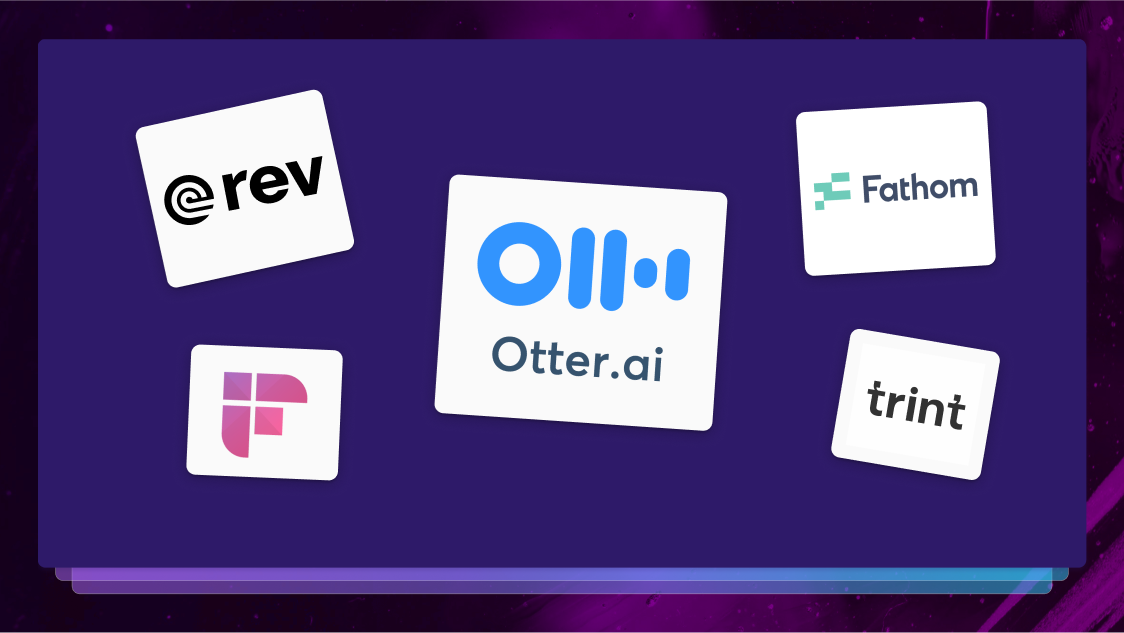AI Efficiency: Four Ways AI Helps Your Business Productivity
Learn how to work smarter with AI. See how artificial intelligence can automate routine tasks and analyze data, helping you accomplish more.

When you think of AI, what pops to mind? Is it the fast-moving pace of the latest technology? Is it the hallucinations and errors that come practically standard with emerging tech? Or, perhaps, is it how efficient AI can make your day?
Though this new computer intelligence still has a long way to go, AI has a host of benefits, with more recent developments including content generation tools like ChatGPT, Claude, Jasper, and hundreds of others—these tools have become top-of-mind when it comes to AI-based services.
The truth is, AI is enveloped in many of the things we use to make our days more efficient, and our lives easier. Companies we interact with daily (such as Tesla, Microsoft, Apple, Cash App, Slack, Meta, and more) all use AI to power components of their algorithms, driving efficiency for their own internal purposes.
So, apart from the infinite amount of content at our fingertips, what else makes AI so great? Let’s dive into the nuts and bolts of AI efficiency below.
1. Scalability in Financial Savings
Incorporating AI into tools and systems is not only cost-effective, but also highly scalable. ChatGPT spits out thousands of words worth of content in seconds, X’s AI-based algorithm updates your feed in real-time, and Google’s Waymo cars can identify hazards on the road to correct course almost instantaneously.
This implementation eliminates hundreds to thousands of hours of human labor, decreasing money spent on manually updating algorithms or poring over pages and pages of content to find one key paragraph or talking point.
2. The Accuracy Advantage
Most AI is trained on existing data that has been pulled from a variety of databases, information hubs, and statistics, making its accuracy comparable to that of a human. While we can discount the likelihood of human error in AI’s function, we must remember that the results of something generated by ChatGPT, for example, could be biased based on the dataset that it has been trained on.
Other AI models, namely those that aren’t generative (meaning they don’t generate new content) return much higher accuracy rates — this includes AI-powered transcription providers like us. In this case, the AI model simply “listens” to the audio provided by the user, and turns it into text — it doesn’t purposefully add, remove, or change any part of what it “hears.”
Though AI is getting smarter every day, it still can get things wrong— this is typically the result of poor audio quality, loud background noise, accented speech, and other anomalies in the video or audio provided.
3. AI Boosts Productivity
Aside from the efficiency provided by AI itself, we must consider its effects on users, creators, teachers, marketers, journalists, court reporters, and more. When individuals in these and similar industries leverage the power of AI, they can complete tasks and projects, meet deadlines, generate content, and more — all at lightning speed.
AI efficiency transcends even single-user use cases — when you save time and effort doing a task, you have more time to work with those around you to perfect the final product.
With tools like Rev Insights, users can quickly dissect their transcripts and share the information they’ve found with their collaborators — colleagues, business partners, coworkers, managers, and more.
4. Increases Content Accessibility
In the case of content creators and journalists, AI can help you quickly generate transcripts and captions for your content, making it accessible for Deaf or hard of hearing users, or those watching without audio.
As for educators, transcribing, adding captions, and adding subtitles to your course content can make it accessible for students with disabilities, or students who don’t speak English as a first language.
AI Tools to See Impact
Now that we’ve explored how the brands you interact with every day use AI in their processes, you may be wondering how you can leverage AI to increase your efficiency. Here are some tools you can check out to help you do just that.
Rev AI Transcription and Captioning
Rev’s AI transcription and captioning services are powered by machine learning and natural language processing to “listen” to, transcribe, and format audio and video content automatically, generating accurate captions and transcripts. Here’s a quick overview of the process:
- Audio input: AI transcription starts with an audio or video file as input. This can be an interview recording, a podcast episode, a lecture, or any other video or audio content.
- Automatic speech recognition (ASR): The system identifies and segments spoken words using algorithms. These algorithms are trained on massive amounts of data of diverse voices and accents, allowing them to recognize a wide range of inputs.
- Natural Language Processing (NLP): After identifying the spoken words, the AI system uses NLP techniques to convert them into written text. NLP helps ensure that the resulting content is not only accurate, but also well-structured and coherent.
- Post-processing: Once the transcript file is ready, the AI system automatically performs tasks like correcting errors, adding punctuation, and formatting the text for easier readability. As for captions, the AI performs a check to ensure that they are synced up to the audio in the video.
Ready to see it in action? Try Rev today and see what AI transcription and captioning can do for you.
Rev Insights
Rev Insights pulls information from your transcripts (whether they’re human or AI-generated in the first place), simplifying the identification of keywords, themes, and trends. It can even generate a summary of your entire transcribed material for quick comprehension.
Think of it as an added layer of AI efficiency that helps you synthesize, explore, and understand your data better once the transcript is complete.
Grammarly
Hopping onto the AI trend, Grammarly has recently released GrammarlyGO, a generative AI that helps users craft content that follows a certain tone, rewrites existing content with additions provided by the user, and can even draft ideas for topics, key points, one-liners, and more.
DALL-E 2
Many people may already be familiar with the power of AI image generation — if you are, you’ll know that DALL-E made waves when it launched, with thousands of users flocking to the platform to generate images ranging from silly and wacky to impossible and a little unsettling.
DALL-E is operated by the same parent company that launched ChatGPT, OpenAI — they’re currently on their second version of the platform, and according to users, it gets better and better each day as it “learns.”
AI Efficiency Use Cases
As a leading provider of AI-powered transcription, Rev knows a thing or two about AI efficiency. Let’s dive deeper by looking at some use cases of AI out in the wild:
AI for Content Creators
The key for content creators is making an impact in a digital world. In fact, 82% of marketers are planning on investing in content marketing in 2024, and 51% of these businesses publish content frequently, even daily. To keep up with the demand for content, content creators can use AI to:
- Generate content: Our world is full of tools specifically designed for content creators to be able to automatically generate relevant hashtags, create captions, brainstorm ideas for new content, and so much more.
- Improve Search Engine Optimization (SEO): Text content accompanying video or audio enhances SEO.
- Repurpose content: AI can help creators repurpose content into blog posts, social media posts, video scripts, and more, expanding its reach and catering to wider audiences.
AI Efficiency for Journalists
Journalists rely on timely reporting and accurate representation of events. Among the other helpful tools for modern journalists, AI helps journalists:
- Record interviews and press briefings: Journalists can record and transcribe interviews, press briefings, and statements directly from their phones with tools like Rev Voice Recorder.
- Write articles faster: AI systems analyze data, pull out key insights, and run fact checks on information, resulting in less time between the draft phase and final publishing.
- Have access to real-time news: There are millions of articles posted online each day – with AI models like Connexun, journalists are able to search for news faster and easier than ever before.
How Researchers Use AI
For maximum efficiency in data analysis, researchers dealing with qualitative data, interviews, focus groups, and recorded observations can harness the power of AI to:
- Gather data with more speed: AI speeds up the transcription of research interviews and discussions, reducing the time required for data entry.
- Create smarter citations: Companies like Scite have created a way for researchers to leverage high-quality citations, determine the usefulness of articles and data, and more.
- Reduce time in editing: Academic and technical spelling and grammar can be a whirlwind to work through in the refinement phase — AI like Trinka is geared to make this process more efficient.
How Educators Benefit from AI
From preschool teachers to college professors, educators must deal with large amounts of information on a day-to-day basis. Here’s how they leverage AI:
- Transcribing lectures: Teachers can use AI transcription for recorded lectures, giving students easy access to written lecture content.
- Brainstorm ideas and lesson plans: Platforms like Canva have been introducing variations of Canva Magic Write, which can provide creative inspiration for everything from lesson plans, to writing prompts.
- Improve the student experience: For teachers who use digital learning content, AI caption generators allow students to follow along with video lessons, even if they’re Deaf or hard of hearing, or simply cannot play the video with the sound on.
Add Rev to Your AI Efficiency Toolkit Today
Following our world’s trend towards AI-powered tools and technologies, Rev has launched our own services that hinge on AI as a productivity and efficiency booster.

As a leader in the transcription, captioning, and subtitling space, we’re always motivated to help our users get the best solution for the most cost-effective prices, with the highest standards of quality. Check out our services and try Rev today to discover the true power of AI efficiency.
















